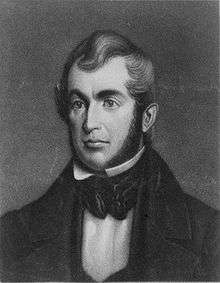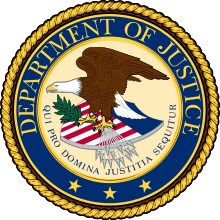Hugh S. Legaré
| Hugh S. Legaré | |
|---|---|
 | |
| 16th United States Attorney General | |
|
In office September 13, 1841 – June 20, 1843 | |
| President | John Tyler |
| Preceded by | John J. Crittenden |
| Succeeded by | John Nelson |
| Member of the U.S. House of Representatives from South Carolina's 1st district | |
|
In office March 4, 1837 – March 4, 1839 | |
| Preceded by | Henry L. Pinckney |
| Succeeded by | Isaac E. Holmes |
| 1st United States Chargé d'Affaires to Belgium | |
|
In office September 25, 1832 – June 9, 1836 | |
| President | Andrew Jackson |
| Preceded by | Position established |
| Succeeded by | Virgil Maxcy |
| 7th Attorney General of South Carolina | |
|
In office November 27, 1830 – November 29, 1832 | |
| Governor | James Hamilton, Jr. |
| Preceded by | James L. Petigru |
| Succeeded by | S. Barnwell Smith |
| Member of the South Carolina House of Representatives from St. Philip's and St. Michael's Parish | |
|
In office November 22, 1824 – November 25, 1830 | |
| Member of the South Carolina House of Representatives from St. John's Parish, Colleton District | |
|
In office November 27, 1820 – November 25, 1822 | |
| Personal details | |
| Born |
January 2, 1797 Charleston, South Carolina, U.S. |
| Died |
June 20, 1843 (aged 46) Boston, Massachusetts, U.S. |
| Political party | Democratic |
| Alma mater | College of South Carolina |
| Profession | Politician, Lawyer |
Hugh Swinton Legaré (local /lᵻˈɡriː/ LA-gree; January 2, 1797 – June 20, 1843) was an American lawyer and politician.
Life and career
Legaré was born in Charleston, South Carolina, of Huguenot and Scottish ancestry.
Partly due to his inability to share in the amusements of his fellows as a result of a deformity due to a vaccine poisoning suffered before he was five (the poison permanently arresting the growth and development of his legs), Legaré was an eager student and was president of the Clariosophic Society at the College of South Carolina (now University of South Carolina at Columbia), from which he graduated in 1814 with the highest rank in his class and with a reputation for scholarship and eloquence.
After graduation he studied the law for three years, did advanced work in Paris and Edinburgh in 1818 and 1819 and in 1822 was admitted to the South Carolina bar.
After practicing for a time in Charleston, he became a member of the South Carolina House of Representatives, serving between 1820 and 1821 and then again between 1824 and 1830. He also founded and edited the Southern Review between 1828 and 1832.
From 1830 until 1832 he was the Attorney General of South Carolina, and he supported states' rights, he strongly opposed nullification. He was Attorney General until he was appointed chargé d'affaires to Brussels in 1832, serving there until 1836.
On his return he was elected to the 25th Congress as a Democrat, but failed in a re-election bid the following term. In 1841 President John Tyler named him Attorney General of the United States and he served in that office until his death. He also served as Secretary of State ad interim from May 8, 1843, until his death.
He died in Boston while attending ceremonies for the unveiling of the Bunker Hill Monument. He was first interred in Mount Auburn Cemetery in Cambridge, Massachusetts, and was later re-interred in Magnolia Cemetery in Charleston. The USCGC Legare, which is a medium endurance cutter, was named in his honor.
See also
Sources
-
 This article incorporates text from a publication now in the public domain: Chisholm, Hugh, ed. (1911). "article name needed". Encyclopædia Britannica (11th ed.). Cambridge University Press.
This article incorporates text from a publication now in the public domain: Chisholm, Hugh, ed. (1911). "article name needed". Encyclopædia Britannica (11th ed.). Cambridge University Press. -
 This article incorporates public domain material from the Biographical Directory of the United States Congress website http://bioguide.congress.gov.
This article incorporates public domain material from the Biographical Directory of the United States Congress website http://bioguide.congress.gov.
Further reading
- The Writings of Hugh Swinton Legaré, South Carolina, 1846. (2 vols.)
- Hollis, Daniel Walker (1951) University of South Carolina, volume I: South Carolina College, Columbia: University of South Carolina Press.
External links
- United States Congress. "Hugh S. Legaré (id: L000220)". Biographical Directory of the United States Congress.
- Hugh S. Legaré at Find a Grave
| Legal offices | ||
|---|---|---|
| Preceded by John J. Crittenden |
U.S. Attorney General Served under: John Tyler 1841–1843 |
Succeeded by John Nelson |
| United States House of Representatives | ||
| Preceded by Henry L. Pinckney |
Member of the U.S. House of Representatives from South Carolina's 1st congressional district 1837–1839 |
Succeeded by Isaac E. Holmes |
| Diplomatic posts | ||
| Preceded by Position established |
U.S. Chargé d'Affaires to Belgium 1832–1836 |
Succeeded by Virgil Maxcy |
